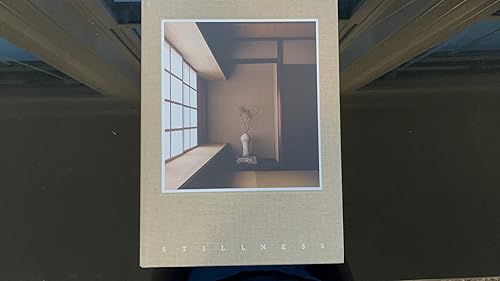In “Stillness: An Exploration of Japanese Aesthetics in Architecture and Design,” readers embark on a visual journey through Japanese culture and design principles. This coffee table book showcases stunning images and thoughtful commentary, highlighting the deep connections between tradition and contemporary architecture. It offers valuable insights into how Japanese aesthetics influence modern design, making it a must-have for enthusiasts and professionals alike.
The authors, Norm Architects, share their unique Scandinavian perspective, ensuring that the blend of cultures is both engaging and educational. Through richly illustrated pages, they provide an intimate look at Japan’s landscapes and architecture, drawing parallels to their own work. Each element in the book invites curiosity and reflection, inviting readers to appreciate the beauty in simplicity and stillness.
For anyone interested in the intersection of culture and design, this book is a treasure trove of inspiration. “Stillness” not only honors Japanese aesthetics but also encourages readers to adopt these principles in their own spaces. Whether for personal enjoyment or professional reference, this book is an enriching addition to any collection.
Philosophy of Stillness in Japanese Culture
The philosophy of stillness in Japanese culture emphasizes balance and harmony. Key concepts like ‘ma’ and ‘yugen’ illustrate how stillness is woven into the aesthetic and spiritual aspects of life. This philosophy values the space between elements and the unseen beauty in simplicity.
Historical Context of ‘Ma’ and ‘Yugen’
‘Ma’ refers to the spaces or intervals between objects. It is about the pauses that create a sense of rhythm. This concept is essential in various art forms, such as music and painting.
‘Yugen’, on the other hand, signifies a profound sense of beauty that is often found in nature and art. It evokes emotions without explicit expression. Both ‘ma’ and ‘yugen’ underscore the importance of what is not immediately visible, creating a deeper appreciation for the harmony in everyday life.
Interplay Between Simplicity and Complexity
In Japanese culture, simplicity does not mean emptiness. It represents a thoughtful selection of elements that create a full experience. The design often uses minimal materials to encourage mindfulness.
Complexity arises from the layers of meaning behind simple forms. For instance, a rock garden may look sparse, yet it conveys messages of peace and reflection. This interplay defines much of Japanese aesthetics, where every detail matters, enriching the overall experience with depth and tranquility.
Architectural Interpretations of Stillness
Architectural interpretations of stillness emphasize harmony, simplicity, and a deep connection to nature. These concepts manifest in various ways, particularly through design elements that reflect Zen principles and the influence of notable architects.
Integration with Nature
Architects often seek to integrate buildings with their natural surroundings. This approach helps create a sense of calm and tranquility. For instance, large windows and open spaces allow natural light to flood in, bringing the outside world inside.
Materials used in construction, such as wood and stone, can blend seamlessly with the environment, promoting sustainability. The idea is to design spaces where architecture and landscape are in balance. Not only does this enhance aesthetic appeal, but it also encourages occupants to appreciate the beauty of nature.
Influence of Zen Aesthetics
Zen aesthetics play a crucial role in architectural designs that evoke stillness. This style focuses on minimalism and simplicity, stripping away unnecessary elements. The use of space is intentional, allowing for quiet reflection.
Key features often include asymmetry, natural materials, and subdued colors. These choices promote a peaceful atmosphere conducive to meditation and contemplation. Spaces designed with Zen principles encourage individuals to slow down and enjoy their surroundings, fostering a deeper connection to both the building and nature.
Notable Architects and their Works
Several architects are renowned for encapsulating the principles of stillness in their work. Tadao Ando, for instance, is known for using concrete and light to create serene spaces. His buildings often reflect the surrounding environment, integrating water features that enhance tranquility.
Another prominent figure is Kengo Kuma, whose designs emphasize harmony with nature through the use of local materials. His approach brings a sense of calm and encourages sustainability.
The works of these architects highlight the importance of stillness in architectural design, showcasing how thoughtful choices can create peaceful, reflective spaces.
Stillness in Modern Japanese Design
Modern Japanese design emphasizes simplicity and tranquility. It combines function and beauty, reflecting a deep respect for the materials used and the craftsmanship involved.
Functional Minimalism in Furniture
Functional minimalism is a core principle in Japanese furniture design. Pieces are often sleek with clean lines, serving essential purposes without unnecessary decoration.
For example, a traditional tatami mat is both functional and aesthetically pleasing. Its natural materials create a calming environment. Furniture like low tables and simple chairs often accompany it, allowing a clear flow of space.
Craftsmanship and Material Selection
Craftsmanship plays a vital role in modern Japanese design. Artisans focus on using high-quality materials like wood, bamboo, and ceramics. Each material is selected not only for its appearance but also for its texture and durability.
Japanese designers often blend traditional techniques with modern approaches. For instance, joinery methods enhance the beauty of wooden furniture without the use of nails.
Emphasis is also placed on sustainability. Designers aim to create pieces that will last for generations, minimizing waste. This thoughtful choice of materials and craftsmanship ensures that each item is not only beautiful but also meaningful in its purpose.
